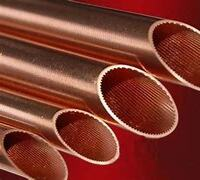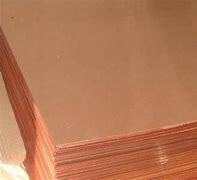1. Introduction
In the past 48 hours, scrap metal recyclers across the U.S. and Europe have reported a surge in demand for clean, stripped copper due to rising global prices and supply chain shifts in renewable energy infrastructure. With copper rod price and copper strip price hitting multi-month highs, knowing how to efficiently strip copper wire isn’t just useful—it’s potentially lucrative. Whether you’re salvaging from old appliances, construction sites, or HVAC systems (like aircon copper pipe), this guide shows you the best way to strip copper wire while maximizing your return and staying safe.

Stripping copper wire for scrap is more than just removing insulation—it’s about preserving the purity and weight of the copper inside. Burnt, nicked, or contaminated copper fetches significantly lower prices. This step-by-step tutorial focuses on practical, accessible methods using hand tools, mechanical strippers, and even DIY hacks that work for both thin copper strips and thick industrial cables.
2. Why Stripping Copper Wire Matters
Recycling centers pay top dollar for ‘bare bright’ copper—clean, unalloyed, and free of insulation, paint, or solder. Unstripped wire might only earn you 30–50% of the value compared to properly stripped copper. Additionally, burning copper wire for scrap is not only illegal in many areas but also releases toxic fumes and degrades the metal’s quality. Proper stripping ensures you comply with environmental regulations and get the best payout.
High-demand items include copper strip wire, flat copper strip, and even copper earth strip 25x3mm—often found in electrical panels or grounding systems. Knowing how to handle these materials correctly can turn a pile of scrap into serious cash.
3. Tools You’ll Need
- Manual wire strippers (for small-gauge wires)
- Automatic or bench-mounted copper wire strippers (for bulk jobs)
- Utility knife or razor blade (use with caution)
- Heat gun (optional, for stubborn insulation)
- Safety gloves and eye protection
- Bucket or container for sorted copper
Avoid using pliers alone—they crush the copper and reduce resale value. For thicker cables like those containing copper rod for welding or copper tubing remnants, specialized cutters may be needed before stripping.

4. Step-by-Step: How to Strip Copper Wire Safely and Efficiently
4.1. Sort Your Wire First
Not all copper is equal. Separate into categories: bare bright, insulated solid-core, stranded wire, and mixed alloys. Look for labels like ‘THHN’ or ‘Romex’—these indicate common building wires. Also check for copper clad steel ground rod remnants or copper bonded earthing rod scraps; these contain less pure copper and should be kept separate.
4.2. Choose the Right Method Based on Wire Type
For thin household wiring (14–12 AWG): Use manual strippers. Cut a 6-inch slit along the insulation, then peel it back like a banana. Avoid nicking the copper underneath.
For thick industrial cable or copper strip roll: Use an automatic stripper. Feed the wire through slowly—most machines adjust for diameter and cleanly remove insulation without damaging the conductor.

For bundled or armored cable: Cut small sections first. Remove outer sheathing with a utility knife, then strip individual conductors. Never burn insulation off—this ruins the copper and violates EPA guidelines.
4.3. Handle Special Cases Like Copper Strip and Rods
Flat copper strips (e.g., 1mm copper strip or beryllium copper strip) often come with adhesive backing or lacquer. Wipe with isopropyl alcohol instead of scraping. For copper round bar or copper rod welding leftovers, no stripping is needed—but ensure they’re free of flux residue or steel cores (common in copper bonded steel).
If you find copper tape for snails (a gardening product) or copper roof strip, these are usually pure and can be sold as-is—just clean off dirt or sealant.
5. Common Mistakes to Avoid
Many beginners ruin their scrap by:
- Burning insulation off (lowers grade and is hazardous)
- Mixing copper with aluminum or brass (reduces overall value)
- Selling copper strip near me without comparing local scrap yard rates
- Overlooking hidden copper in AC units—air conditioner copper pipe price has spiked, so recover those lines carefully during demolition
Always call ahead to your local recycler. Some accept copper strip wire only if coiled neatly; others require minimum weights.
6. Maximizing Profit: Tips Beyond Stripping
Once stripped, bundle your copper by type. Bare bright should be separate from copper alloy strip or nickel plated copper strip. Weigh each batch—many yards offer better rates for >50 lbs. Keep an eye on copper ingot price trends; selling during market peaks (like now) can net 20–30% more.
Don’t forget ancillary items: copper bus bar, flexible copper bar, and even copper pipe fittings can be cleaned and sold alongside your wire. When stripping wire for recycling, every gram counts.
7. Conclusion
Stripping copper wire for scrap doesn’t require expensive gear—just patience, the right technique, and knowledge of what buyers want. By avoiding shortcuts like burning and focusing on clean separation, you’ll consistently get top dollar for your efforts. Whether you’re handling a roll of copper strip, remnants of copper rod welding, or old aircon copper tube, this method ensures maximum return with minimal risk. Start small, stay safe, and let rising copper prices work in your favor.
Our Website founded on October 17, 2012, is a high-tech enterprise committed to the research and development, production, processing, sales and technical services of ceramic relative materials such as How. Our products includes but not limited to Boron Carbide Ceramic Products, Boron Nitride Ceramic Products, Silicon Carbide Ceramic Products, Silicon Nitride Ceramic Products, Zirconium Dioxide Ceramic Products, etc. If you are interested, please feel free to contact us.

